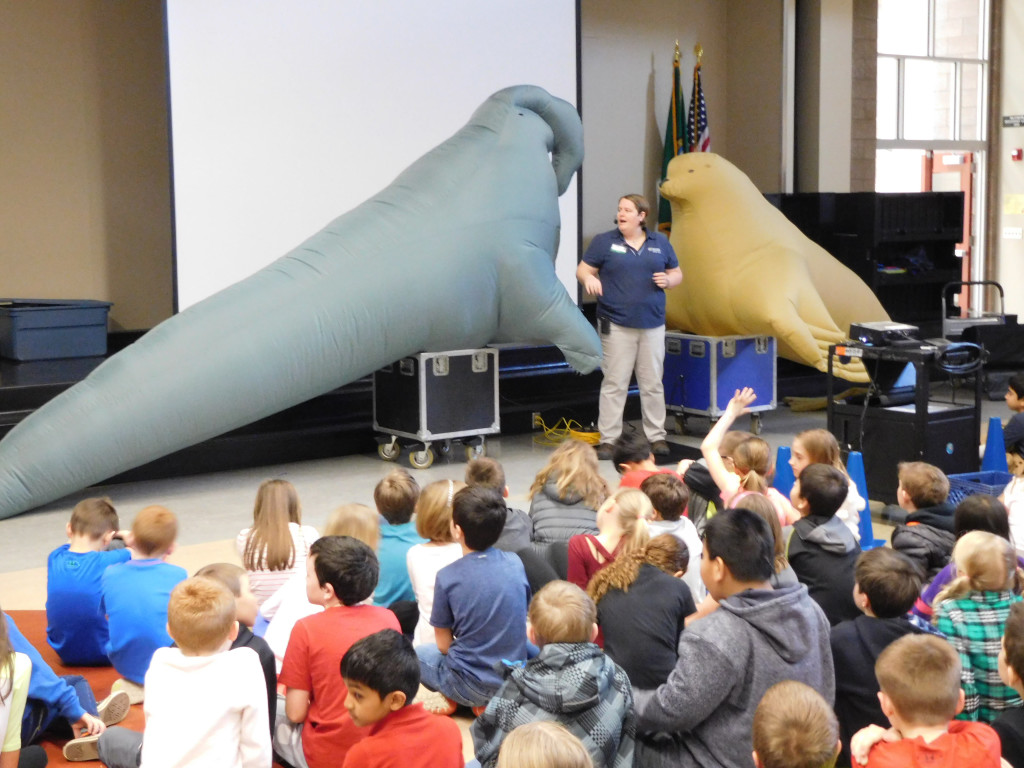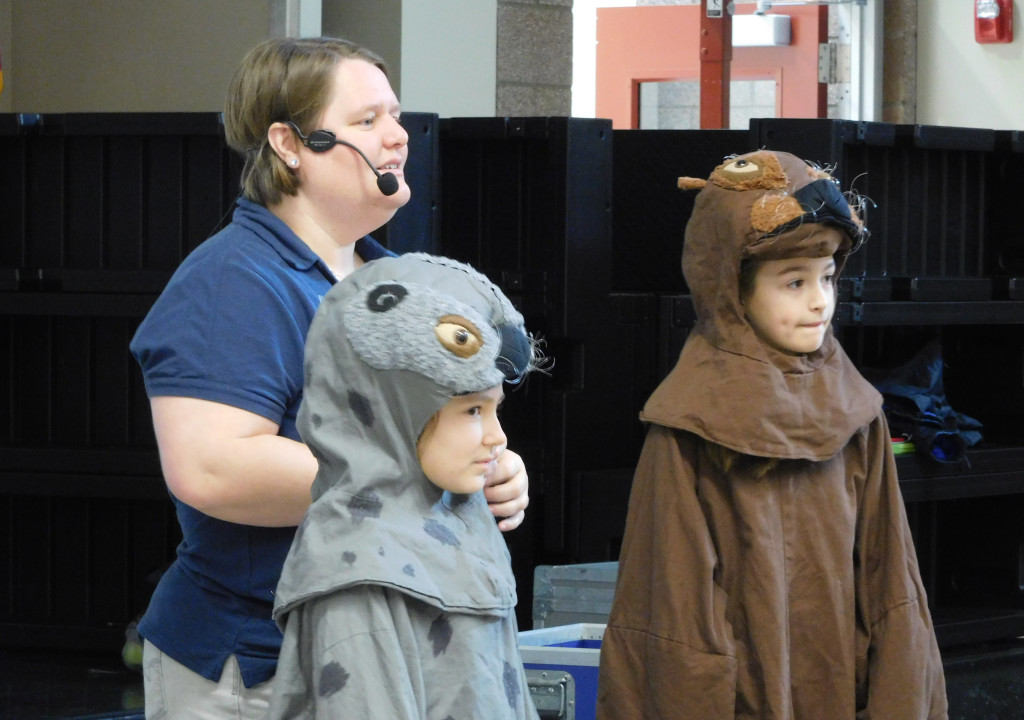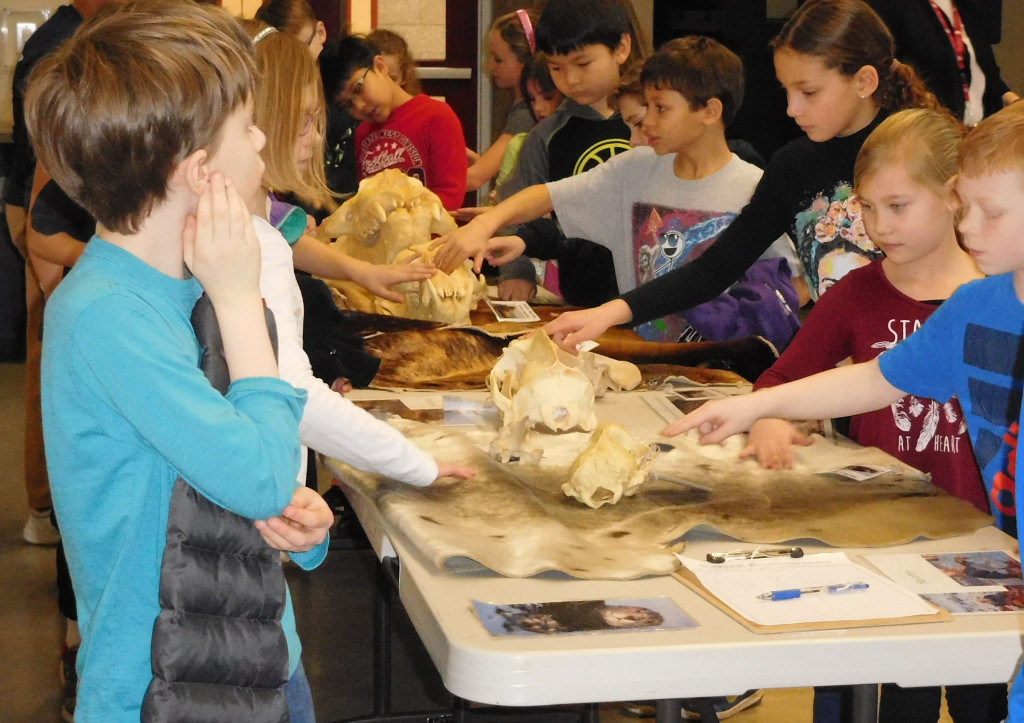Students at Dorothy Fox Elementary School had the opportunity to experience an aquarium without ever leaving their school.
That’s because it was one of the elementary schools in Clark County selected for the Oregon Coast Aquarium’s outreach program. The assembly-style events make coastal and ocean education accessible to kids who may not have an opportunity to explore the Oregon Coast with their families or during field trips.
“The excitement that erupts when kids touch a sea otter pelt or stand next to a life-sized inflatable Stellar sea lion for the first time makes traveling for these programs so fulfilling,” said Jenni Remillard, aquarium education specialist.
She was on hand to help the students learn about the adaptations of sea otters, seals and sea lions, including their body structure, diet and social behavior using an interactive Power Point presentation, props and audience volunteers.
Students learned about the sea otter, seal, and sea lion secrets to survival as three of their classmates dressed up in costumes to represent the marine mammals. After the presentation, students were given the opportunity to visit a table containing items such as pelts and skulls.








